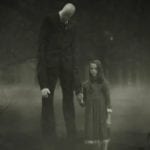 Technology
Technology  Technology
Technology  Humans
Humans 10 Everyday Human Behaviors That Are Actually Survival Instincts
 Animals
Animals 10 Animals That Humiliated and Harmed Historical Leaders
 History
History 10 Most Influential Protests in Modern History
 Creepy
Creepy 10 More Representations of Death from Myth, Legend, and Folktale
 Technology
Technology 10 Scientific Breakthroughs of 2025 That’ll Change Everything
 Our World
Our World 10 Ways Icelandic Culture Makes Other Countries Look Boring
 Misconceptions
Misconceptions 10 Common Misconceptions About the Victorian Era
 Mysteries
Mysteries 10 Strange Unexplained Mysteries of 2025
 Miscellaneous
Miscellaneous 10 of History’s Most Bell-Ringing Finishing Moves
 Technology
Technology Top 10 Everyday Tech Buzzwords That Hide a Darker Past
 Humans
Humans 10 Everyday Human Behaviors That Are Actually Survival Instincts
 Animals
Animals 10 Animals That Humiliated and Harmed Historical Leaders
Who's Behind Listverse?

Jamie Frater
Head Editor
Jamie founded Listverse due to an insatiable desire to share fascinating, obscure, and bizarre facts. He has been a guest speaker on numerous national radio and television stations and is a five time published author.
More About Us History
History 10 Most Influential Protests in Modern History
 Creepy
Creepy 10 More Representations of Death from Myth, Legend, and Folktale
 Technology
Technology 10 Scientific Breakthroughs of 2025 That’ll Change Everything
 Our World
Our World 10 Ways Icelandic Culture Makes Other Countries Look Boring
 Misconceptions
Misconceptions 10 Common Misconceptions About the Victorian Era
 Mysteries
Mysteries 10 Strange Unexplained Mysteries of 2025
 Miscellaneous
Miscellaneous 10 of History’s Most Bell-Ringing Finishing Moves
Top 10 Worst Giant Movie Monsters
In 1954, a 46-meter (150 ft) lizard splashed onto Japan’s movie screens, and ants the size of trucks crawled onto American ones. The success of Godzilla and Them! spurred Hollywood and Tokyo filmmakers to rush more supersized mutants in front of audiences, often with ridiculous results.
10The Giant Claw (1957)
This film’s bird-monster—with its accordion neck, rolling bug eyes, fang-filled mouth, and ratty Mohawk—looks like it was hit by a cord of ugly sticks. It ate planes and trains and destroyed buildings by using its face like a wrecking ball, which explains a lot. The creature was not a prehistoric vulture awakened from an iceberg nor was he a radiation-enhanced turkey from Bikini Island. “That bird is extraterrestrial. It comes from outer space,” explains a scientist character in the movie. “From some Godforsaken antimatter galaxy millions and millions of light years from Earth.”
Principal shooting was done without the monster, who was added later after the special effects were farmed out to a Mexican shop. Lead actor Jeff Morrow explains, “The director—Fred Sears—just told us, ‘All right, now you see the bird up there, and you’re scared to death! Use your imagination.’ But the first time we actually got to see it was the night of the premiere. The audience couldn’t stop laughing. We were up there on the screen looking like idiots, treating this silly buzzard like it was the scariest thing in the world . . . [The producers] told us afterwards that they just ran out of money. They couldn’t afford anything but this stupid puppet . . . I was never so embarrassed in my life.” The embarrassment was profound that the movie wasn’t released on DVD until 2007.
The problems didn’t end with the look of the monster. The creature’s strings were clearly evident, as were those that brought yummy airplanes to its mouth. One plane—which had two engines in one scene and four in another—was swatted out of the sky and stopped falling when it became entangled in its strings. It hung there for a moment, rose slightly, and then finally crashed.
9Earth vs. The Spider (1958)
Filmmakers followed up the success of Them! by throwing every annoying bug they could think of onto the screen in 1957. There were grasshoppers in The Beginning of the End, a praying mantis in The Deadly Mantis, scorpions in The Black Scorpion, and wasps in Monster From Green Hell. The trend reached its stupid conclusion the following year in Earth vs. the Spider, a rip-off of another rip-off—albeit a relatively successful one—known as Tarantula that was released in 1955. It was directed by the king of rip-offs, Bert I. Gordon.
Gordon was famous for cheap, hackneyed visual effects. In Earth vs. the Spider, people are caught in webs that look like cargo nets. The monster is a normal-size arachnid crawling over plastic models or what look suspiciously like scenic postcards. In a scene where the spider chases a car, Gordon used processing shots so low-quality that the creature was transparent. The scenery bled straight through it.
In a trend seen over and over in these movies, science was completely discarded. At one point, a character who is a high school science teacher says, “Speaking of spiders, insects have pretty simple nervous systems.” Spiders, of course, are not insects. The arachnid also shrieks, though spiders have no physical mechanism for producing vocal sounds.
Gordon was not above schlocky promotional tactics. The local theater in the movie’s town plays not one but two of his previous films. Gordon shamelessly tried to pander to a younger crowd by showing the citizens drag the stunned giant arachnid to the high school gym, where they inexplicably decide to fill the gym with teens and hold a sock hop. In a scene with such overt symbolism that it would have made Sigmund Freud blush, the rock and roll wakes the monster. It apparently doesn’t like what it hears, because it begins rampaging through the town.
The movie’s odd title is indicative of the filmmaker’s priorities. Originally, the flick was called The Spider, but when Earth vs. the Flying Saucer came out in 1956, producers changed it to a similar title. When the blockbuster The Fly hit the screens just as Earth vs. the Spider was about to be released, the producers quickly added the original title back to the film’s advertisements, but the new title remained in the finished movie.
8Godzilla vs. The Sea Monster (1966)
Through the 1950s and ’60s, filmmakers gave Godzilla a whole host of humongous monsters to fight against and to fight alongside with him. He had his share of insects, spiders, and sea creatures, but Big G enthusiasts generally agree that two of the lamest members of the Godzilla pantheon appeared in the same film, Godzilla vs. the Sea Monster.
The seventh film starring Big G was one of the few not directed by Ishiro Honda, who is considered the father of Godzilla. His replacement, Jun Fukuda, had little love for special effect films and drastically cut the role played by longtime Godzilla special effects director Eiji Tsuburaya. Unfortunately, it showed.
It didn’t help that the film was originally written to star King Kong rather than Godzilla. When Kong was pulled from the project, the script was kept and the heroes were switched, but fans were used to Honda/Tsuburaya films where Godzilla held death matches with his foes while dry-roasting whole cities. This film was one of the few set exclusively on a remote island. No Tokyos to obliterate here. Fukuda decided to keep the villainous monsters that might have been formidable against a big monkey without powers but were laughably inadequate against a lizard with a Kevlar hide and volcanic halitosis.
One of these baddies was a giant orange condor that didn’t even earn a name and did little more than fly around and annoy Big G. When Godzilla had had enough, he simply roasted the bird in mid-air. The other was given the overly pretentious name of “Ebirah, Horror of the Deep.” This “Horror” stands in waist-deep water waving his claws around, giving Big G a goose now and then. At one point during their battle, Ebirah pulls Godzilla underwater. This might have elicited some tension had Ebirah been wrestling Kong, but Big G spends almost as much time underwater as a lobster. He does what any seafood-lover would do: He boils Ebirah, tears him to pieces, and then dunks him in a yellow liquid that looked suspiciously like melted butter.
7Attack Of The 50 Foot Woman (1958)
If anyone doubts that horror films rely heavily on sexual exploitation, they need only see the promotional posters for a spate of “gigantic human” films that appeared in the late 1950s. On the poster for the 1957’s The Amazing Colossal Man, actor Glen Langan grins lasciviously through a high-rise window at a bathing woman. The poster for the 1959 horror comedy The 30-Foot Bride of Candy Rock shows its star Lou Costello (in his only film without Bud Abbott) clinging to the calf of a giantess dressed in a transparent bridal gown. Another giantess, Allison Hayes, became something of a pin-up woman when she was featured on the poster advertising Attack of the 50 Foot Woman. She is shown straddling a highway as tiny cars crash directly under her skimpy miniskirt. That scene, of course, never appeared in the movie.
While the poster for Attack of the 50 Foot Woman seems interesting enough, the movie is a yawner. It has a cheesy script, wooden acting, and grimace-worthy special effects. Filmed in just two weeks with an $88,000 budget, a supersized Hayes does little more than stomp around in looped processing shots, looking either ghostly white or transparent. When Hayes reached down to pick something up, she did so with a papier-mache hand, shaken to make it look like it was moving. The electrical tower she stands near at one point is clearly made of wood, not steel.
Whatever message the storyline might have conveyed with its early women’s lib theme (Hayes is a millionaire who fights both an antiquated legal system and a slimy, cheating husband), it was mitigated somewhat by the revealing bra and miniskirt she sported as a giantess. If any relevance remains, it is dashed by the unnecessary introduction of a giant alien and his cheesy flying saucer.
6The Monster That Challenged The World (1957)
Unlike most cheesy monster movies, The Monster That Challenged The World benefited from a decent script and adequate acting. It even features a moonlight swim scene that anticipates Steven Spielberg’s opening sequence in Jaws. Unfortunately, it’s just hard to make a shell-less snail scary. The film’s bombastic title, which told moviegoers nothing about what to expect, isn’t even accurate—the killer snail doesn’t challenge the world, just a small island.
The filmmakers tried to hide this film’s many shortcomings by grossing out their 1950s audience. One snail pops the head off a skin-diver and sucks the blood from a sailor, whose blackened, shriveled body is lovingly captured. The inconsiderate snail also leaves a trail of radioactive mucus everywhere he goes.
Fans of the film, who tout it as one of the best of the 1950s, defend the film’s special effects by pointing out its impressively detailed monster suit, but they miss a critical point—the suit doesn’t look anything like a snail. Snails do not have pincers, mouths, bulging eyes, or the stumpy feet on which the creature moves (at speeds most snails only dream of).
5Son Of Godzilla (1967)
Godzilla fans seem split when it comes to the creature variously known as Baby Godzilla, Godzilla Junior, Minilla, and Minya. Some hate him, and nobody else seems to care. The consensus appears to be that Junior is the Japanese version of Scrappy Doo and served no purpose but to sell toys, at least initially.
In later films, Junior actually contributed to Daddy’s many battles, but in his two films, Son of Godzilla and Destroy All Monsters, he is widely mocked. Son of Godzilla was directed by Jun Fukuda, the same guy who ruined Godzilla vs. the Sea Monster. In this film, Baby G pops out of an egg as a silly-looking marionette, whose strings are clearly visible. Junior has a more human-like face than Dad, no teeth, chipmunk cheeks, and a pudgy body.
In a shameless effort to draw younger viewers, Big G and son romp around, play jump rope with Daddy’s tail, and practice disgorging fire, though Junior can only belch ridiculous smoke rings. For most of the movie, Junior gets in trouble and generally keeps Dad from taking a nap. Meanwhile, the audience is snoring.
4Attack Of The Crab Monsters (1957)
Science-fiction icon Roger Corman was the creator of these pathetic monstrosities and director of the film in which they appeared. Corman was another director/producer legendary for his cheap films. He could complete a movie so quickly that he would leave enough days on his actors’ contracts to film another movie entirely. He was also known to recycle abandoned sets from other productions.
The creatures in this movie are obviously supersized crustaceans, but they have eerie human eyes. They also have the ability to absorb human voices and knowledge, becoming smart enough to blow up a seaplane and sabotage a radio, after eating human brains. They emit beams of infrared radiation that pulverize chunks of the island they share with humans, who are forced into the water where the monsters lie in wait. The crabs also use their human voices to lure victims to dark, isolated caves.
Again, the “science” part of this science-fiction epic is highly suspect. One scientist character examines crab tissue under a microscope and explains that it’s liquefied, allowing the crabs to absorb human brains, their memories, and their voices. If that sounds like gibberish, that’s because it is.
3Food Of The Gods (1976)
American International Pictures made the worst choice possible when they hired Bert Gordon, the Earth vs. the Spiders guy, to direct the first and third of a trio of movies based on H.G. Wells’s stories, the first of which was Food of the Gods. Gordon wrote a cringe-worthy script full of one-dimensional characters who delivered atrocious dialogue and did things that defy logic.
The plot follows visitors of the doomed island where a farmer feeds his baby chicks goo that oozes out of the ground on his property. The chicks grow 3 meters (10 ft) tall, kill their parents, and then try to peck the humans to death. Other creatures—such as wasps, worms, and rats—also sample the goo and grow to enormous sizes. Gordon never bothered to explain what the goo was or where it came from, nor did he say why creatures of such varied taxonomic classifications, digestive systems, and metabolisms would react to the goo in the exact same way.
Gordon’s skills in creature effects had not improved since the 1950s. He again used matte shots with humans on one side of the screen and the creature on the other side and relied on ridiculous models. There is one scene in which a giant rat attacks a man in a red car that then cuts to a wide shot in which real rats playfully nudge a Matchbox car of a different shade of red.
2Night Of The Lepus (1972)
You have to wonder why so many supposedly smart executives green-lit a film about giant pink-nosed bunnies that attack a town and eat people. In the film, scientists test ways to control an overpopulation of rabbits with chemicals, and one of the test bunnies breeds with a wild hare. Their offspring become huge people-eating rabbits, and it’s never explained how the mama bunny gave birth to multiple babies that were six or seven times her size.
The producers wisely hid the true nature of their monster in their promotional materials prior to the movie’s release. Posters of the movie showed humans fleeing leering eyeballs, but these eyes were binocular—forward-facing eyes set on the front of the head like humans have—instead of monocular eyes like rabbits. The trailer is equally cagey, with disembodied screams and a voice that announces, “Kill one, and thousands take its place.” Apparently, producers were banking on the audience’s ignorance of the origins of the word “lepus.”
But how do you make bunnies scary? According to this film, you rarely actually show them, instead focusing on people lying in bed or on the floor screaming while being squirted with spaghetti sauce before cutting to a close-up of a bunny mouth smeared with ketchup.
1Monster From The Ocean Floor (1954)
Usually we multicellular creatures are not intimidated by amoebae, even if they are the size of cows. Roger Corman apparently disagreed and bet his whopping $18,000 budget that audiences would run screaming from the theater as soon as they saw his goofy interpretation of a gigantic amoeba. They went running, but only toward the box office to get their money back.
Corman padded much of this movie with lengthy skin-diving scenes of a curvy heroine, meant to remind audiences of the slow-motion underwater scenes in The Creature From the Black Lagoon, which was released just four months before his film. When he was not showcasing swimwear, he was filming a mini-sub, which was admittedly a novelty back then. We hardly ever see the monster, which shows up only twice and always appears shrouded in murky water or out of focus. That’s fine, because it’s not a coincidence that an octopus easily stands in for the strawberry-shaped, tentacled, one-eyed monster during those rare action scenes.
Legend has it that this was actually Corman’s second iteration of the film’s monster. The first creature, which supposedly looked like a giant contraceptive diaphragm, was so hilarious to test audiences that a thin-skinned Corman cut it from the film.
Steve spent too many hours in front of the television watching horrible monster movies. He wrote a biography of Abraham Lincoln called 366 Days in Abraham Lincoln’s Presidency: The Private, Political, and Military Decisions of America’s Greatest President.








